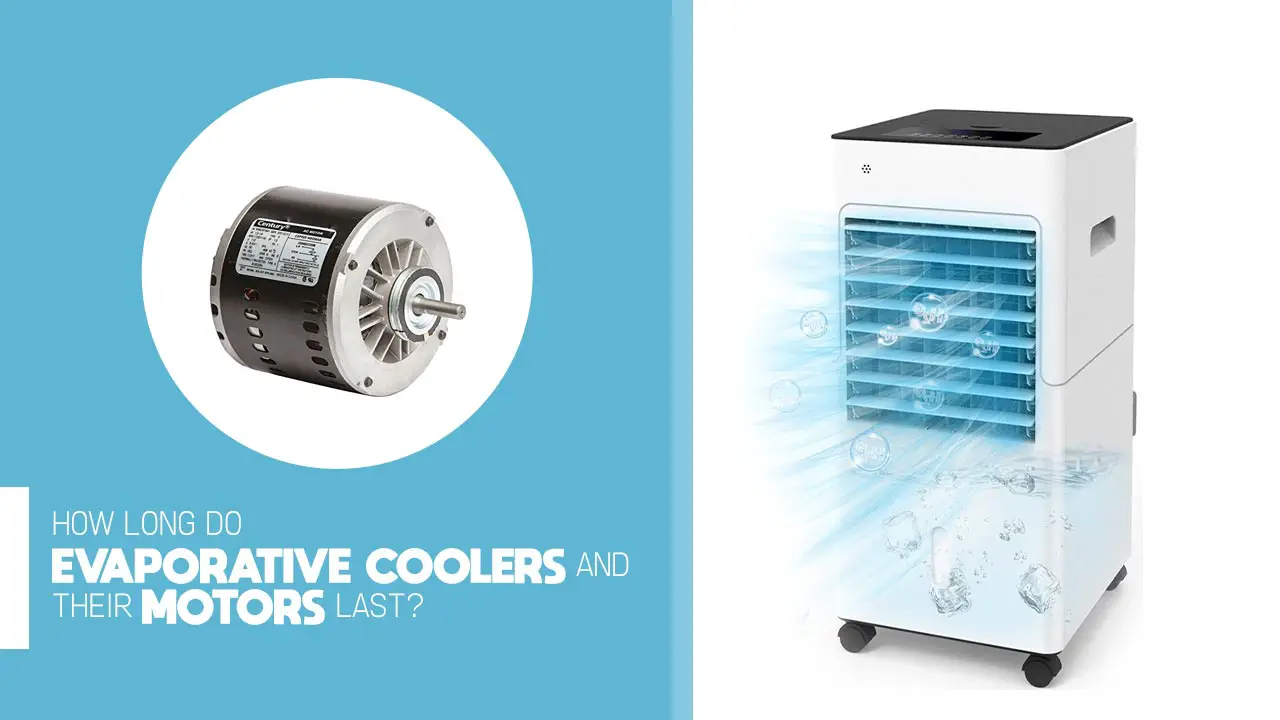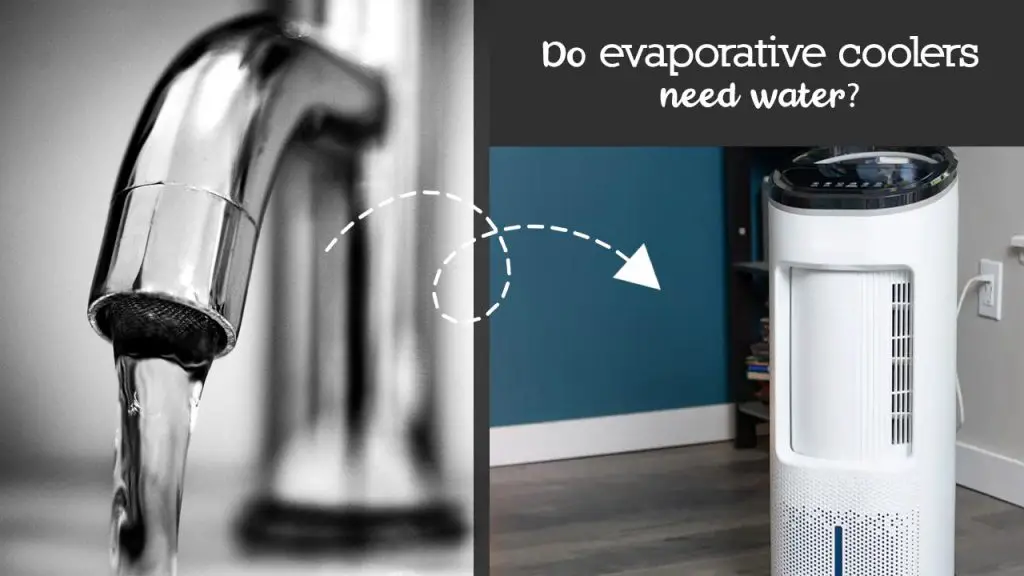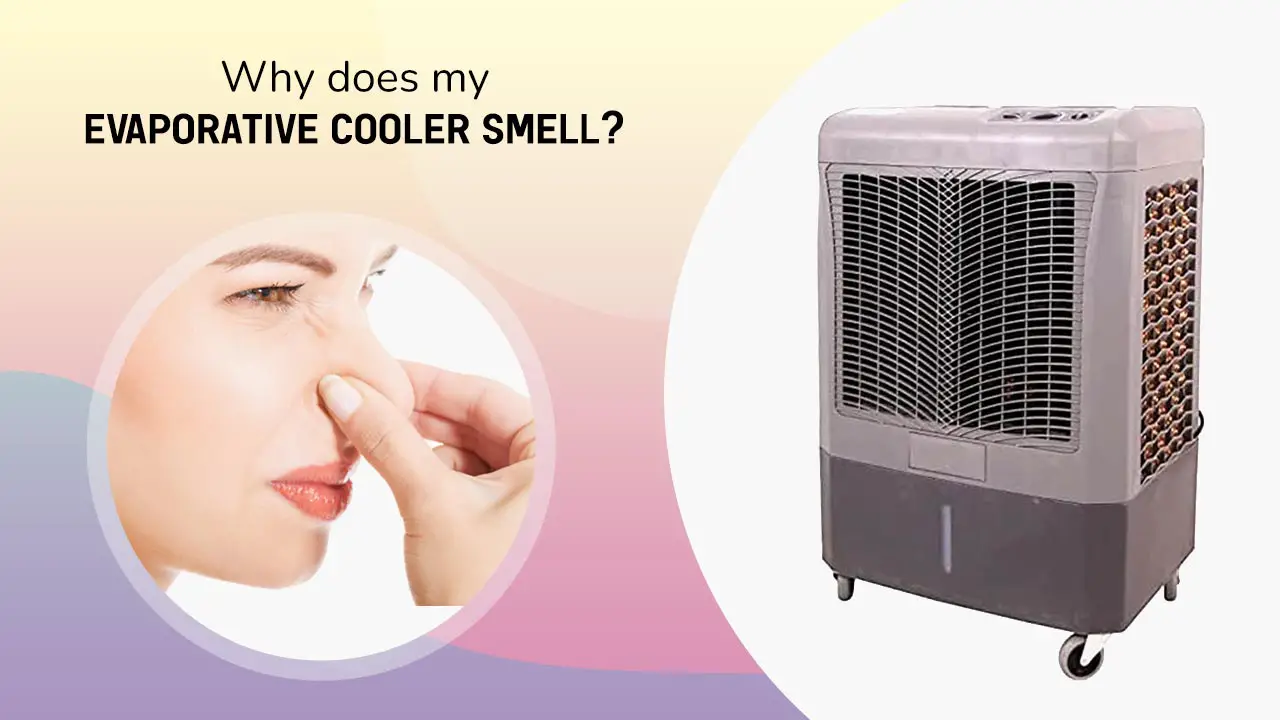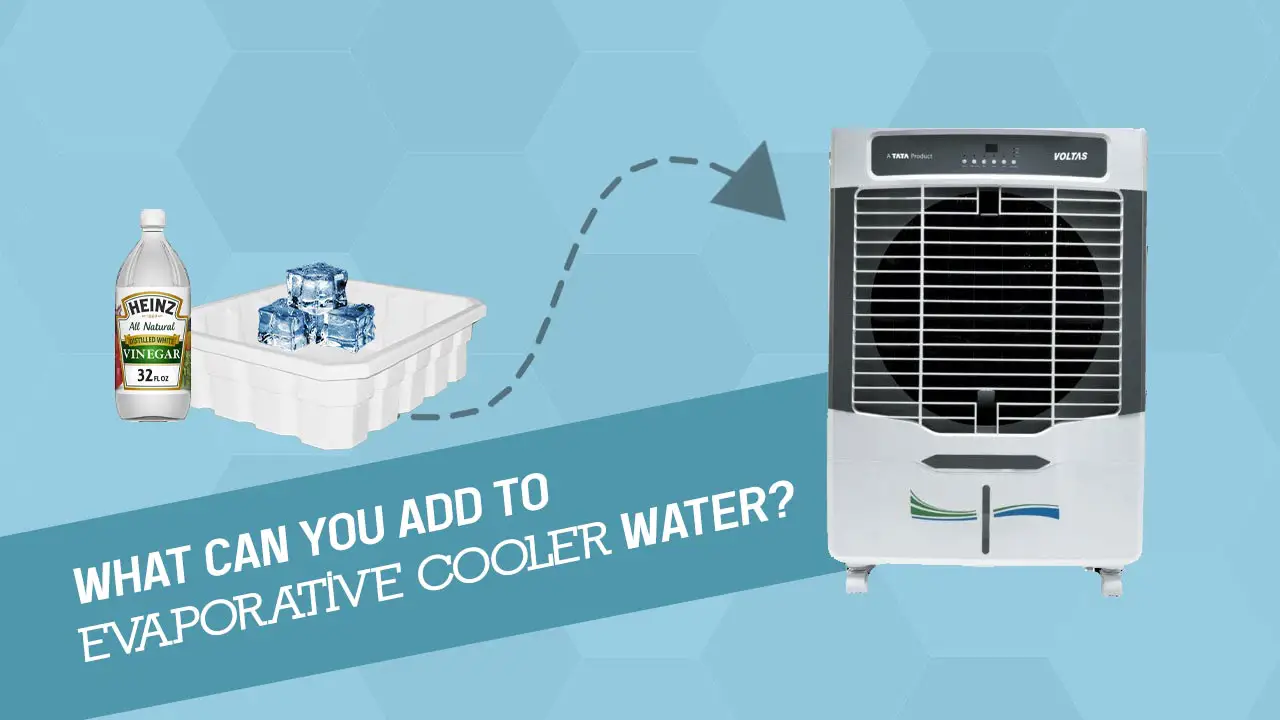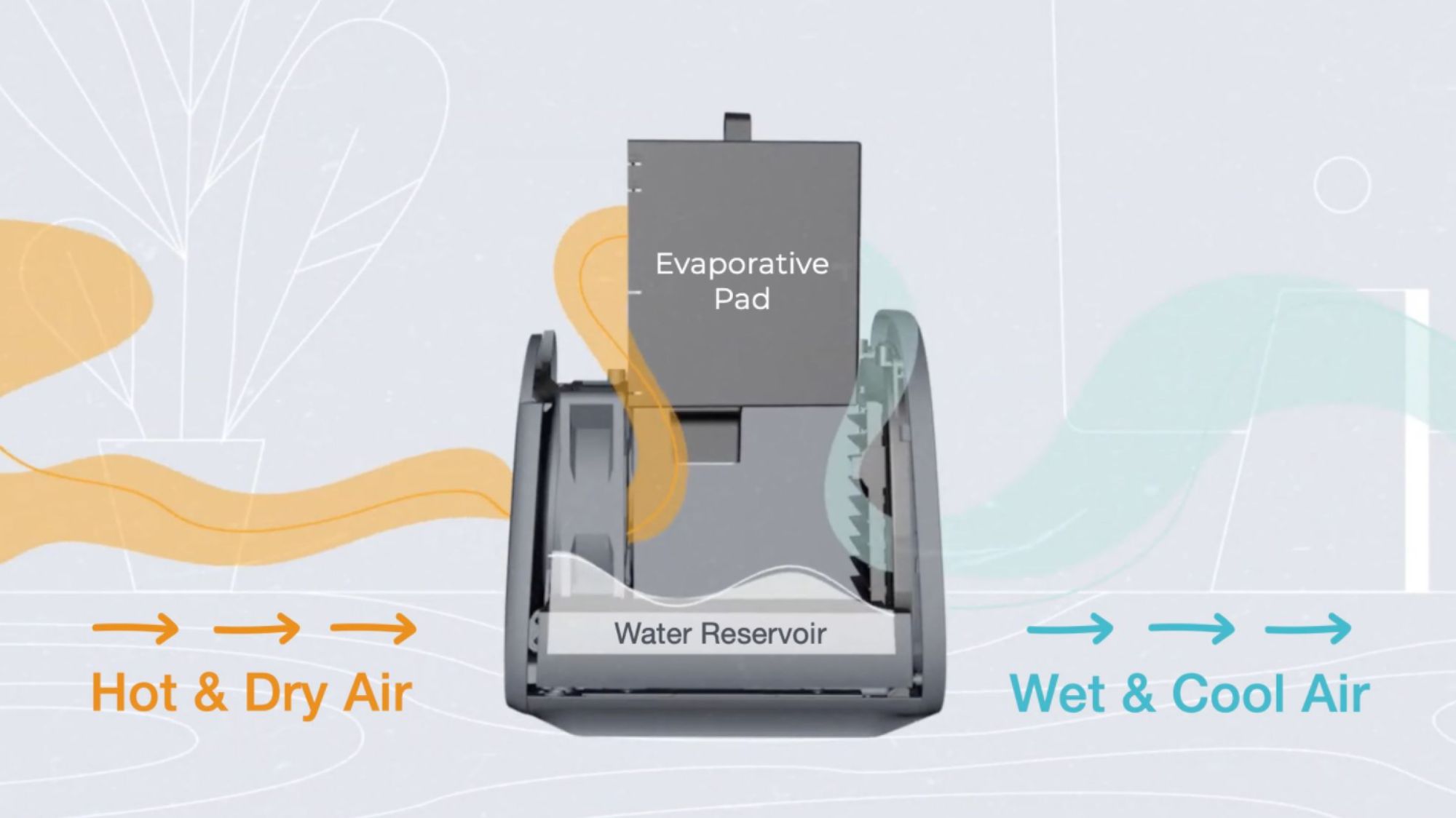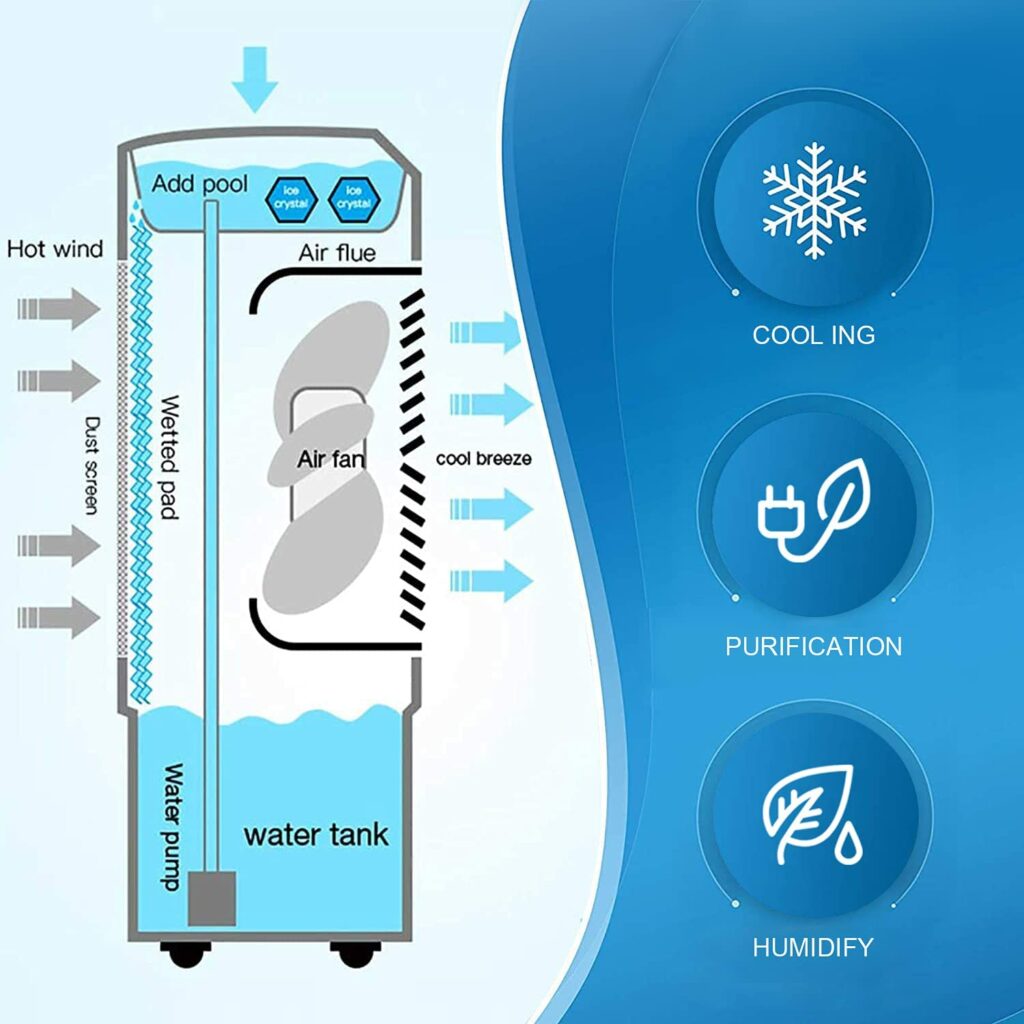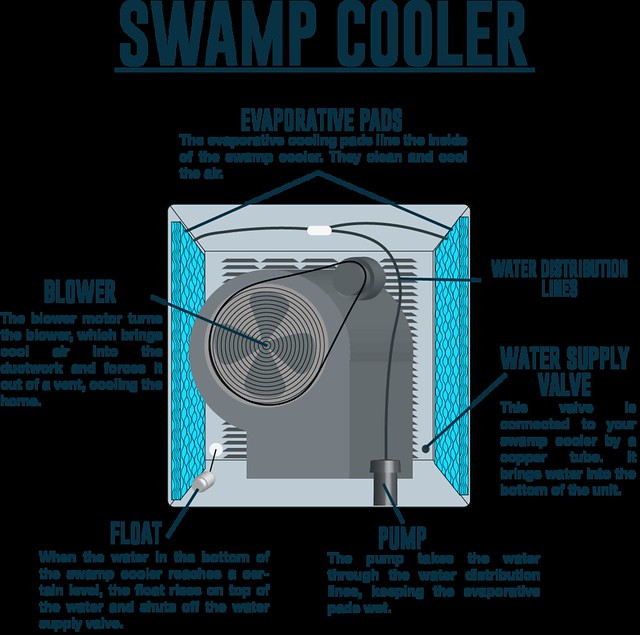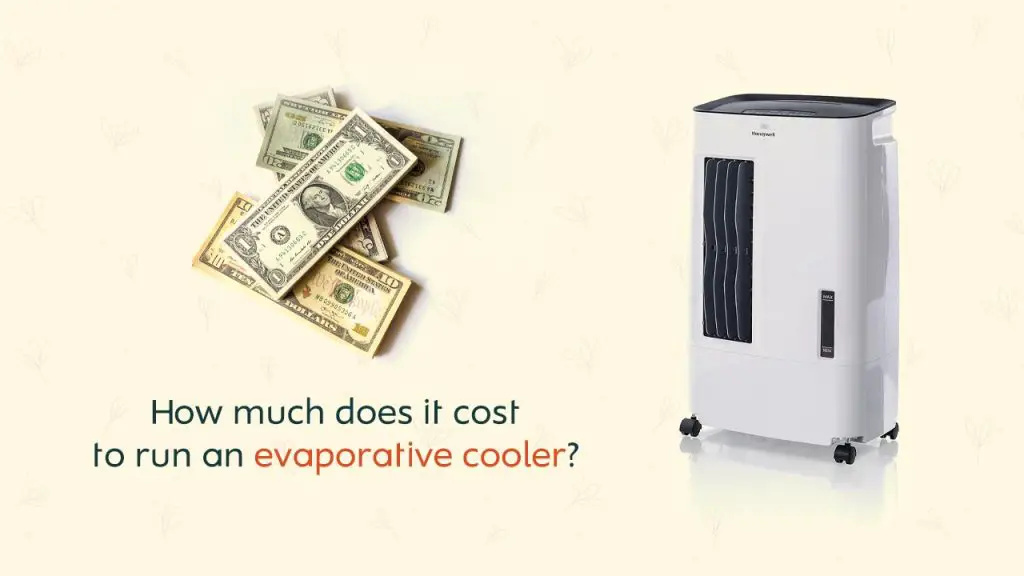How Much Water Does A Evaporative Cooler Use
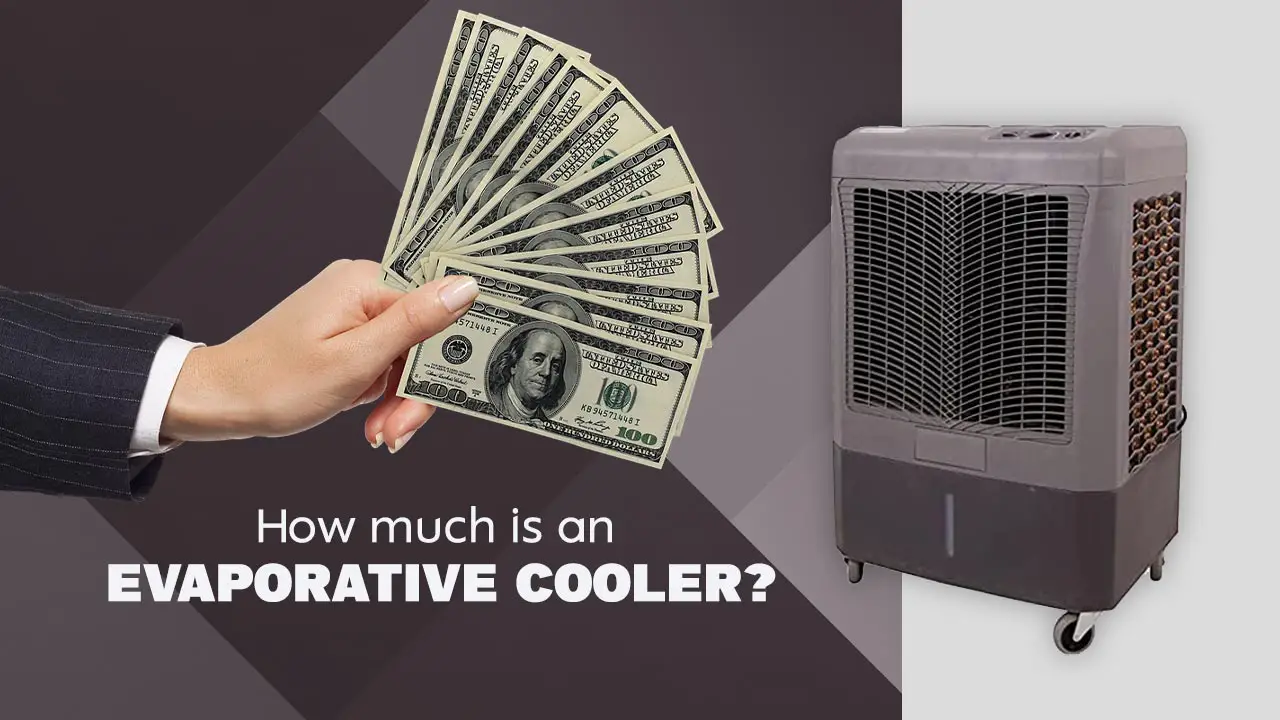
Imagine a sweltering summer afternoon. The sun beats down relentlessly, turning the air thick and heavy. But then, you step inside, and a gentle, cool breeze washes over you, offering sweet relief. It’s not the bone-chilling blast of air conditioning, but a more natural, almost earthy coolness, courtesy of an evaporative cooler.
This leads to the question: how much water does this refreshing coolness actually cost? An evaporative cooler, often called a swamp cooler, uses significantly less energy than traditional air conditioning. However, its reliance on water raises concerns about water consumption, especially in drought-prone regions.
Understanding Evaporative Cooling
Evaporative cooling is an age-old principle, dating back to ancient civilizations who used wet cloths to cool the air. Modern evaporative coolers mimic this process. They draw in hot, dry air and pass it through a wet pad or filter.
As the water evaporates, it absorbs heat from the air, lowering the temperature. This cooler, humidified air is then circulated into the room, providing a refreshing alternative to air conditioning, especially in arid climates where its efficiency peaks.
The Water Consumption Factor
The primary difference between evaporative coolers and air conditioners is their reliance on water. Air conditioners use refrigerants to cool air in a closed system, while evaporative coolers need a continuous supply of water to function. So, how much water are we talking about?
The water usage of an evaporative cooler depends on several factors, including the cooler's size, the ambient temperature, humidity levels, and how often it's used. Generally, a typical residential evaporative cooler can use anywhere from 3 to 15 gallons of water per hour. This range is broad, and actual consumption can vary significantly.
Smaller, portable units usually consume less water than larger, whole-house systems. Higher temperatures and lower humidity levels will increase water consumption, as the cooler needs to evaporate more water to achieve the desired cooling effect. Regular maintenance, like cleaning the water reservoir and replacing the cooling pads, also plays a role in optimizing water usage.
Comparing Water Usage: Evaporative Coolers vs. Air Conditioners
While evaporative coolers use water, it's important to compare their overall environmental impact to traditional air conditioning systems. Air conditioners consume a considerable amount of electricity, which often comes from power plants that burn fossil fuels.
The energy consumption of air conditioners contributes to greenhouse gas emissions, exacerbating climate change. Evaporative coolers use significantly less electricity, leading to a smaller carbon footprint. This can be a crucial advantage in regions with a high reliance on fossil fuels for electricity generation.
However, in areas facing severe water scarcity, the water consumption of evaporative coolers can be a concern. The decision to choose an evaporative cooler over an air conditioner depends on local climate conditions, water availability, and individual environmental priorities.
Factors Influencing Water Usage
Several factors can influence the amount of water an evaporative cooler uses. Humidity is a key determinant. The drier the air, the more efficiently the cooler works and the more water it evaporates.
Temperature also plays a significant role. Higher temperatures mean more evaporation and thus, higher water consumption. The size and type of cooler are important as well. Larger coolers, designed to cool larger spaces, naturally use more water.
Moreover, improper maintenance can lead to increased water waste. Clogged pads, leaks, or malfunctioning float valves can contribute to unnecessary water consumption. Regular inspections and timely repairs are essential for efficient operation.
Tips for Reducing Water Consumption
Fortunately, there are several ways to minimize the water footprint of evaporative coolers. First, ensure the cooler is properly sized for the space you need to cool. An oversized cooler will consume more water than necessary.
Regular maintenance is critical. Clean or replace the cooling pads regularly to ensure optimal evaporation. Check for leaks and repair them promptly. Use a timer or thermostat to control the cooler's operation, preventing it from running unnecessarily.
Consider using a water recirculation system. These systems collect and reuse water that would otherwise be drained, significantly reducing water consumption. Landscape around the cooler to provide shade, which can lower the temperature and reduce the amount of water needed for cooling.
The Future of Evaporative Cooling
As water scarcity becomes an increasingly pressing issue, innovation in evaporative cooling technology is gaining momentum. Researchers are exploring new materials and designs that enhance cooling efficiency while minimizing water usage.
Some advancements include more efficient cooling pads, improved water distribution systems, and integration with smart home technology for optimized control. Hybrid systems that combine evaporative cooling with other cooling methods are also being developed.
These innovations aim to strike a balance between energy efficiency and water conservation, making evaporative cooling a more sustainable option for the future. Government initiatives and incentives promoting water-efficient technologies are also helping to drive adoption of these advanced systems.
"The key to sustainable cooling lies in finding the right balance between energy consumption and water usage," says Dr. Emily Carter, a leading environmental engineer at the California Institute of Technology.
Regional Considerations
The suitability of evaporative cooling varies significantly by region. In arid and semi-arid climates like the Southwestern United States, evaporative coolers are highly effective due to the low humidity levels.
However, in humid climates, evaporative cooling is less efficient, as the air is already saturated with moisture. In these regions, traditional air conditioning may be a more appropriate choice, despite its higher energy consumption.
Water availability is another critical factor. In areas facing severe water shortages, the water consumption of evaporative coolers may outweigh their energy-saving benefits. It's essential to consider local climate conditions and water resources when deciding between evaporative cooling and air conditioning.
Real-World Examples
In Phoenix, Arizona, a city known for its scorching summers, many homeowners rely on evaporative coolers to stay comfortable. The City of Phoenix Water Services Department encourages residents to use water-efficient models and provides resources on water conservation.
Studies conducted by the Arizona Department of Water Resources show that homes using evaporative coolers can save up to 75% on energy costs compared to those using air conditioning. However, the department also emphasizes the importance of responsible water usage.
In contrast, in cities like Atlanta, Georgia, where humidity levels are high, evaporative coolers are less common. Most homes rely on air conditioning systems, although there is growing interest in exploring hybrid cooling technologies that combine the benefits of both systems.
Conclusion
The question of how much water an evaporative cooler uses is complex and multifaceted. While these coolers offer a more energy-efficient alternative to air conditioning, their water consumption must be carefully considered, especially in water-scarce regions.
By understanding the factors that influence water usage, implementing water-saving strategies, and embracing technological advancements, we can harness the benefits of evaporative cooling while minimizing its environmental impact. The path forward lies in informed choices and a commitment to sustainable cooling solutions that respect both energy and water resources.
Ultimately, the choice between evaporative cooling and air conditioning is a personal one, guided by local climate, water availability, and individual priorities. But by embracing a mindful approach to cooling, we can create comfortable and sustainable living spaces for ourselves and future generations.


